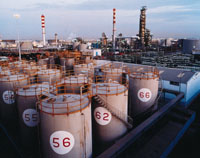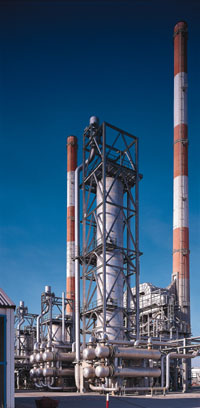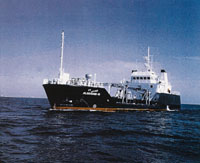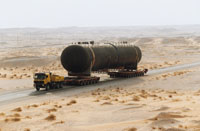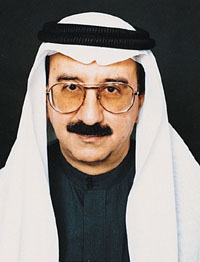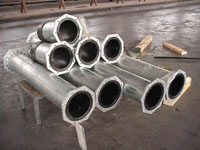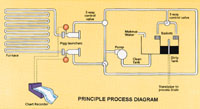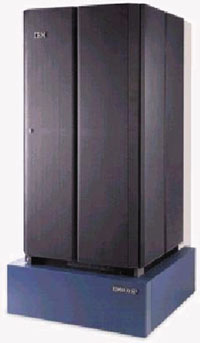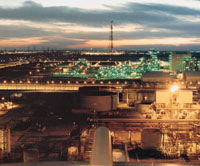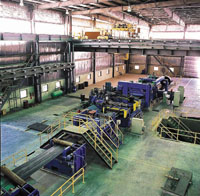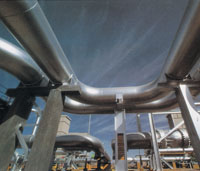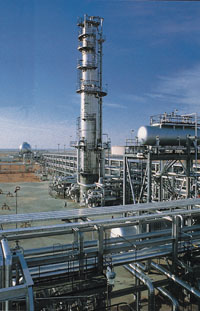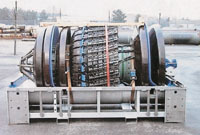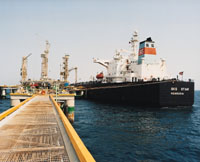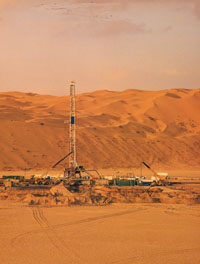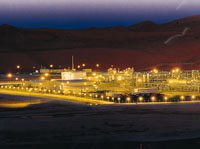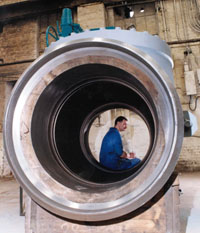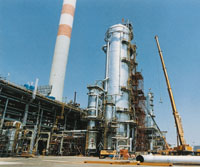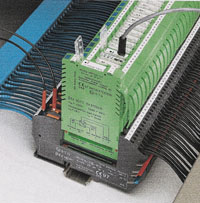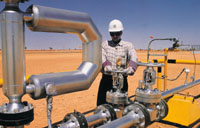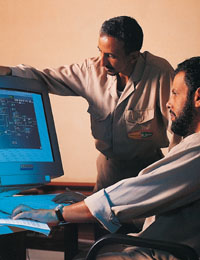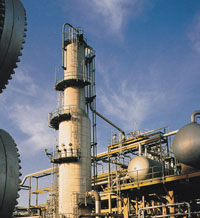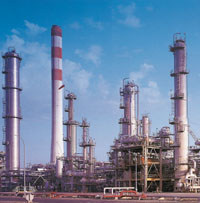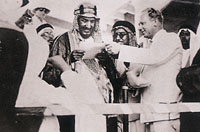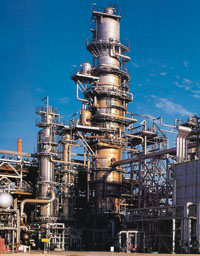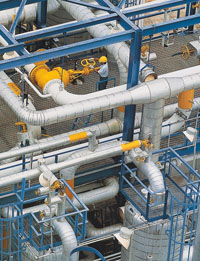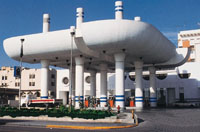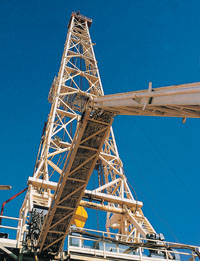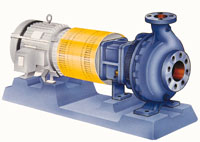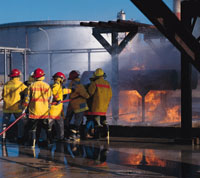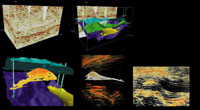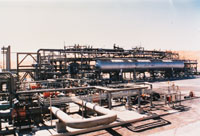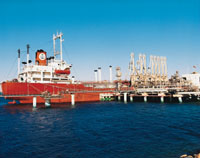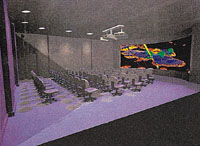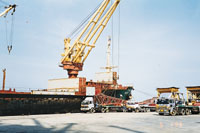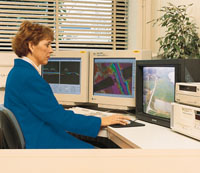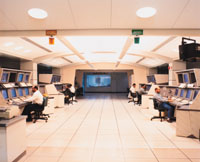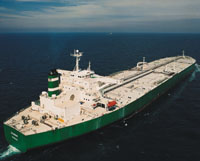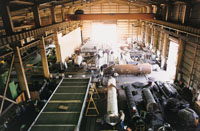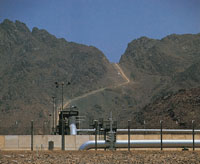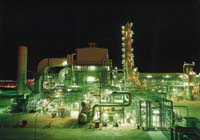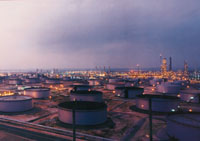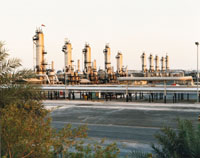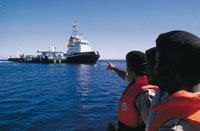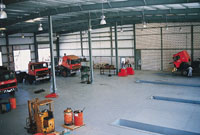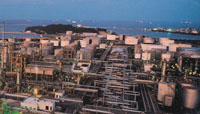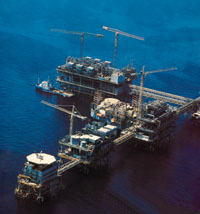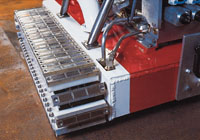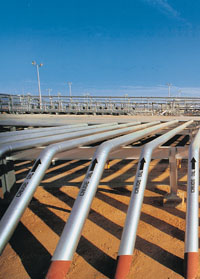

The company has successfully constructed state-of-the-art infrastructure to support a fully-fledged Intranet and Internet capability, according to Ibrahim Mishari, vice president Information Technology. Saudi Aramco, like other large global corporations, sensed the power and promise of Web technology in the early 1990s as a solution, both internal and external, to the communications and information processing challenges faced by diversified enterprises.
Responding to the vision of corporate management, Saudi Aramco embarked on a plan to put the company online with as little delay as possible. This project resulted in the rapid construction of a state-of-the-art infrastructure necessary to support a fully-fledged Intranet as well as Internet capability.
This massive project included laying optical fiber cable for transmission-line upgrades, installing powerful server configurations and distributing desktop computers throughout the enterprise to accommodate the client/server architecture.
Completion of the infrastructure, coupled with the ubiquity of Internet application technology resulted in a virtual net explosion for Saudi Aramco in 1998 reflecting the trend worldwide.
Since then the company has made major advances in deploying network communication and information and data management both internally and externally.
At the beginning of last year the internal corporate-wide Intranet, managed by Information Technology's Computer Applications Division, had networked virtually all of the company's business units either as data providers, users or both.
As of the middle of last year the Saudi Aramco Intranet featured more than 420,000 Web pages found on 135 Web sites which are accessible only inside the company.
This newly-realised online capability integrates database and document management technology with Web browser technology, allowing the majority of professional employees quick access in a Web browser environment, usually from the desktop, to these pages and other forms of information and data previously available only as paper documents or hard copy, if at all.
A powerful Intranet search engine allows users to find search terms on both Web pages and in documents within those Web pages. Among assets which can be found on the Intranet are a full complement of electronic forms that can be completed online and stored; copies of the company's operating procedures, management guide, telephone book, flight schedules, and a wide array of human resources information ranging from training and career development to employment policies and references plus task-specific information from numerous operating organisations.
Also available via the Intranet are web-enabled downloadable software.
As the 21st century dawns, the company will continue to move toward an integrated client-server computer framework using the latest Enterprise Resource Planning technologies in tandem with the emergent electronic document and knowledge management technologies.
Internet Saudi Aramco has also broadened its domestic and global communications capability via the Internet with the launch of a corporate World Wide Web site located at https://www.saudiaramco.com.
The Web site is yielding several key benefits, including a virtually instant worldwide communications capability between the company and its various publics, increased corporate identification opportunities and an expanded access, both public and proprietary, to an authoritative voice offering accurate information about the company.
Ready for implementation are several linked sites which will offer various business-critical electronic solutions such as e-commerce, virtual private networks for proprietary information exchange and other high-speed applications.
The core Web site incorporates a number of emergent technologies such as animation, scrolling messages and sound files.
The appearance and functionality of the site are both simple and direct. Colours and type fonts are browser-friendly so that they remain consistent from user to user.
Easy access begins with the home page which presents a dramatic graphic around which are arrayed five information categories plus a link to a site map and search engine.
The home page offers ample expandability options. Information on the Web site is organised conceptually into five broad categories designed both to streamline data access and to accommodate nearly every aspect of the company's operations.
Each category listed on the home page is a hyperlink that will take the user directly to a category's main page when clicked. Each category's main page and the remainder of pages in that category use a web site navigation aid offering two main features.
Management of the company's online activities is the responsibility of Information Technology, whose vice president also serves as the company's Chief Information Officer.
The company's INET Group, part of Information Technology, will be implementing a variety of solutions to strengthen the corporate networks.
It has already begun deployment of Microsoft Office 2000 server extensions which will allow Office 2000 users to use the corporate Intranet as a means to publish and update their Web sites.
The group will investigate and prototype multi-casting technologies involving sound and video capabilities.
This will include development of virtual meetings via media servers where people can meet virtually without leaving the office.
It will also make presentations available in real time regardless of geographic location. And if the meeting is missed, participants can see and hear a stored version later, on demand. This technology also permits attachment of audio commentary to PowerPoint slides and guides users through demonstrations or even a Web site itself.
Other technologies being looked at include investigation and implementation of directory services that provide support for open standards promoting the use of Extensible Markup Language (XML), which complements HTML, the language used to build web sites.
XML promises to increase the benefits that can be derived from the wealth of information found today.










































































